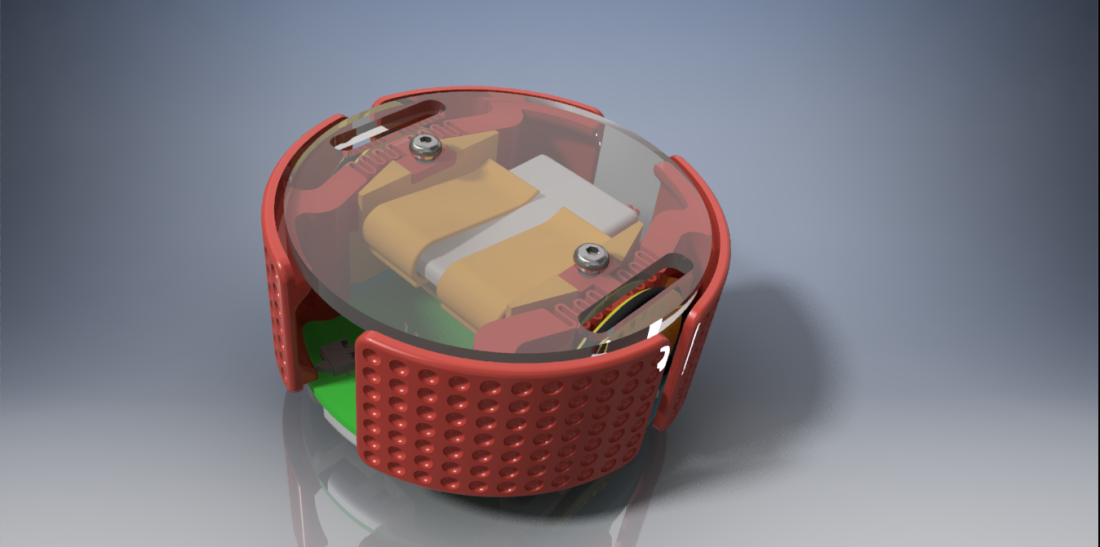The world we’ve ended up creating for ourselves is wasteful, excessive, and unfair to many people – it’s not really something you can argue against. There will always be things that are done in an inefficient manner, new things will always waste more resources initially than whatever preceded it, and someone will always end up on the losing team. And despite the unprecedented improvements in the tools we’ve created to bring order to the world, we still find that technology gets in the way of life more often than it improves it. I fear that the field of robotics, which as a young adult choosing their career path seemed like a gateway to the idealistic future western society has dreamed of, is now just one of the leading causes of this superficial bubble that we find ourselves in, and I’m not exactly sure where we go from here.
The tools we have to work with are incredibly powerful, and they are in no way limiting what we can create. Industrial robots are more reliable, cost-effective, and faster than humans at building things, and have changed the way that we interact, travel, and…well, do everything we do. I would argue there’s no part of life, no thing that people use on a daily basis, that was not improved by the creation of fabricating robots. Clothes and textiles can now be created in much more complex methods without added labor cost. Cars and other large equipment have become much safer and can be made much faster than ever in the past, thanks to the robotic arms that assemble, weld, paint, and validate their construction. Automatic pick-and-place, flying probe, and other robotic systems involved in manufacturing circuit boards are one of the only things that has allowed the consumer electronics explosion to occur, and why I can purchase a device with hundreds of components in its circuits for a couple dollars. This means that hopefully someday, humans will no longer be needed for hard labor, and that we will all be able to spend more time doing the things we’re passionate about – yada yada….that’s not the direction I am trying to take this argument. But it has changed how we live our lives, arguably for the better.
But why is it that while robots excel at replacing humans entirely for certain tasks, that the system falls apart very rapidly when they have to work together? Why does every Home companion robot concept seem uncanny and forced , or take years to develop to a point where it can be seen as an actual improvement over the way things are now? Why is a Roomba, a robotic tool that only does one thing, capable of messing up in such a massive way that it would make their owner consider placing the three-figure investment into the garbage? And is there even a point to trying to put robots in these positions, is there even something here that we’re trying to improve? I’m not so sure.
BE As good as A HUMAN, OR DON’T EVEN TRY
If a robot is going to attempt to improve our lives, it can’t be a source of frustration. However, if the logic inside is not capable of identifying every possible situation that it could face, then there will inevitably be a situation where the robot existing makes life more of a hassle, and thus might as well not exist. I suppose there that the sentiment is more of an grey area, and that some robots can at times be useless yet still an improvement over whatever performed the job previously(as someone who designs and works with 3D printers for a living, I know that feeling pretty well…) . But for the most part, humans have very high expectations of how animate objects should act and react, which is not unrealistic, since almost all animals we encounter have the ability to – for example – respond to simuli quickly, make rational decisions (is there a wall in front of me? maybe I should turn? Ok, yeah, let’s turn before hitting it!) in various situations (what if there’s a glass door, or a low wall? do I do the same thing?) , and express emotions (or at least appear to). anything that claims to be a companion, or an aid to your life, and is not capable of performing these tasks, might as well not exist.
Is an obstacle avoiding robot with sound and vision sensors actually a practical method of implementing security at a mall? what about delivering take-out? these tasks all involve human interaction in some form, and if my experiences of ordering food while intoxicated are any reference, a robot like these will at least need some pretty advanced speech detection to even comprehend the situations it may find itself in. The root of all this, then, is that humans like to interact with humans, and anything less than that is a tool, like the robots that build our cars and clothes. Either they need to respond in ways that we would expect, or never respond at all, anything in the middle just makes the experience worse.
Where am I going with this?

9 months ago, I worked on a project which was coined TigerBug, and would be a small, autonomous robot that could perceive its surroundings, and make rational decisions based upon what it saw, meanwhile maintaining a low material cost (robots this small can’t be expensive in my opinion; unless the military or MIT is purchasing them, buyers will find it hard to justify spending a significant amount on something that could be destroyed so easily). We created a pretty compelling design, but in the end a lack of time and resources brought the project to a premature finish. since then, I’ve had a bin of printed plastic parts sitting on my shelf, making itself more useful as a bookend than as a robotic companion.
I’ve considered working on the project again, but in a different way. Before, our goal was to reach the intelligence level of an insect, and keep the cost as low as possible. However, most people think of insects as pests, not something beneficial. If a feeble, hockeypuck-sized robot is going to survive in this brave new world, it needs to have something more to it – intelligence (at least more intelligence than a machine that pushes dog shit around without a second thought), maybe even a temperament or sense of humor. But there is one thing that I’ve realized that it will not have – a definite purpose. Many projects start as research (as this peoject was), and are then quickly spun into something practical, purposeful, beneficial to humanity. The next big thing, a game-changer in how people can maintain their gardens or build fancy bridges across streams, things that certainly appeal to my inner nerd, but aren’t really a thing that I would have considered important. I know that tigerbug, while possibly an intelligent, reactive and personal robot, was not brainstormed with a distinct purpose in mind, and I don’t want to pretend to myself, or to others, that this project is for the greater good. If something beneficial comes from it, that’s great, and I certainly won’t ignore any opportunities I come across. But that, of course, is not the point.
